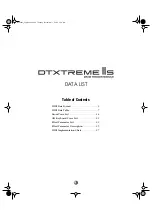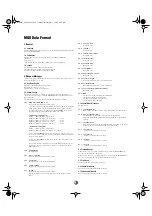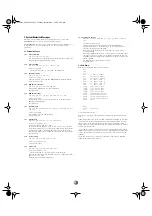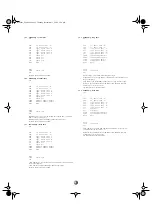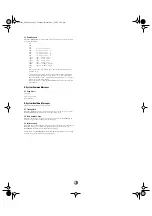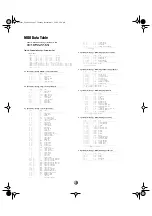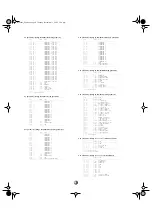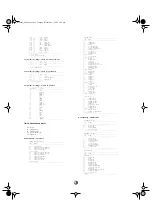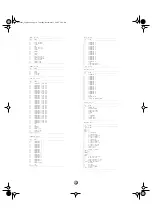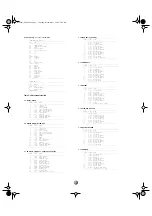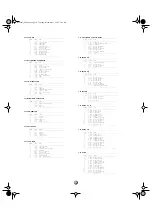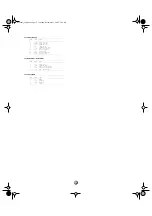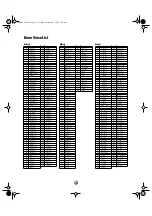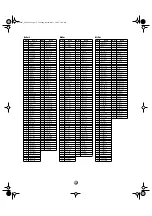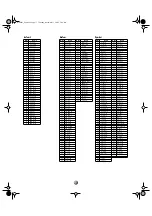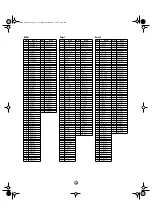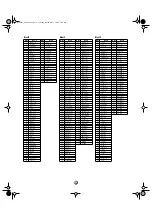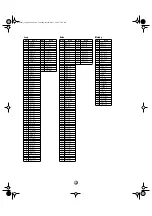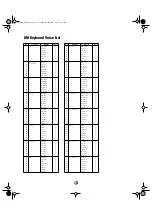
6
3.3 Dump Request
When the DTXTREME IIs receives dump request (reception only), it transmits
requested bulk data.
$F0
$43
$7D
$2n
n: device number
$44
ID, ASCII char 'D'
$54
ID, ASCII char 'T'
$58
ID, ASCII char 'X'
$54
ID, ASCII char 'T'
type1
type, ASCII char
type2
type, ASCII char
type3
type, ASCII char
type4
type, ASCII char
numM
object number MS7bit
numL
object number LS7bit
$F7
Type specifies the type of bulk data. See the bulk dump format for
available types.
Object number specifies a unique number from multiple similar kinds
of data (like drum kit number, song number or so on). If the target
data is single (like system common data, edit buffer data or so on), this
value must be $7F $7F ($3FFF).
If the target data is a song, the DTXTREME IIs will not respond to $7F
$7F ($3FFF).
4. System Common Messages
4.1 Song Select
$F3 $nn
nn is song number.
Reception only.
5. System Realtime Messages
Supports both transmission and reception.
5.1 Timing Clock
When the “MIDI sync mode” system parameter has a value of “ext” or “auto,”
the DTXTREME IIs synchronizes to incoming timing clock.
5.2 Start, Continue, Stop
When the “MIDI control” system parameter is set to off, the DTXTREAME IIs
does not receive start, continue and stop messages.
5.3 Active Sensing
Reception: If an active sensing message is received and there is no subsequent
MIDI data coming in for more than approximately 300 milliseconds, the
DTXTREAME IIs will mute all current sounds playing.
Transmission: The DTXTREME IIs transmits MIDI data including active sensing
message every (approximately) 300 milliseconds.
DTXIIsDL_Eng.book Page 6 Tuesday, November 11, 2003 5:30 AM


